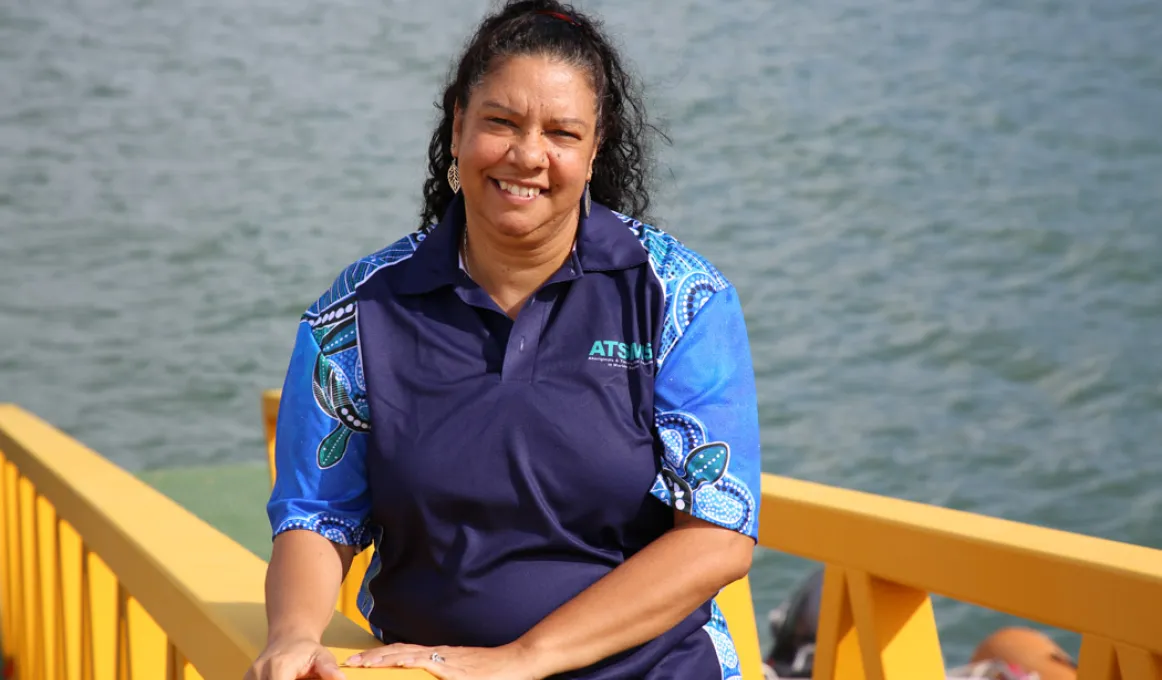Connecting traditional knowledge and science practices

Traceylee Forester is connecting traditional knowledge and science practices for Australia’s leading marine research body, the Australian Institute of Marine Science.
Traceylee Forester is the first Indigenous partnerships co-ordinator at the Australian Institute of Marine Science (AIMS).
Traceylee is a Lama Lama woman on her mother’s side, whose traditional sea country is Princess Charlotte Bay, in Cape York, and on her father’s side, she belongs to the Nywaigi people of the Ingham area.
Since beginning work with AIMS in Townsville, Traceylee has been putting an Aboriginal and Torres Strait Islander Engagement Strategy into action for Australia’s leading marine research body.
AIMS research manager Libby Evans-Illidge, said there were inherent traditional rights and interests in sea country, and there was respect for traditional knowledge and science practices.
’We wanted to develop more meaningful relationships with the Traditional Owners of the sea country where AIMS works, from Exmouth in Western Australia, right across the top end, and down to the southern Great Barrier Reef,’ Libby said.
‘Ultimately, we hope to establish more working relationships with Aboriginal and Torres Strait Islander people, to develop a better understanding of each other and our shared marine environments.’
When AIMS first began establishing its Indigenous engagement strategy, Traceylee was developing a strategy to attract greater science and management partnerships on her country.
She’d previously worked with the Great Barrier Reef Marine Park Authority and Queensland Parks and Wildlife Service, to ensure the Lama Lama Traditional Use of Marine Resource Agreement (TUMRA) supported her people to manage their sea country sustainably. She said once the agreement was established, the community had seen the TUMRA programs flourish.
Traceylee said she was impressed with AIMS’ commitment to Indigenous engagement.
The Aboriginal and Torres Strait Islander flags were raised at AIMS for the first time this year and the Bindal Traditional Owners performed a traditional smoking ceremony at the Cape Cleveland research site.
Traceylee was excited to welcome Aboriginal and Torres Strait Islander Marine Science students to AIMS and the National Sea Simulator in May, where the students got hands-on with everything from the latest drone technology, to 6000-year-old coral cores, and marine research projects.
Traceylee represented AIMS at the 32nd annual National Estuaries Network meeting in Darwin and the Australian Marine Sciences Association conference in Adelaide, where the benefits and challenges of scientists working more closely with traditional land and sea owners were discussed.
Find out more
AIMS is Australia’s tropical marine research agency and plays a pivotal role in providing large-scale, long-term and world-class research that helps governments, industry and the wider community to make informed decisions about the management of Australia’s marine estate.